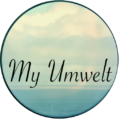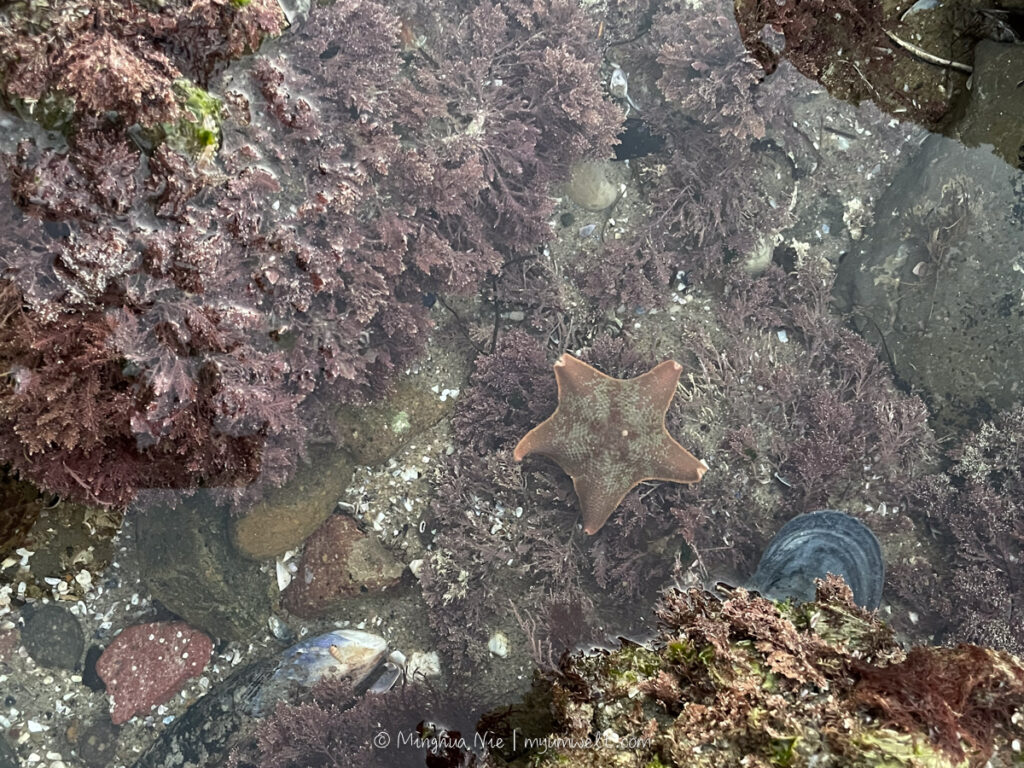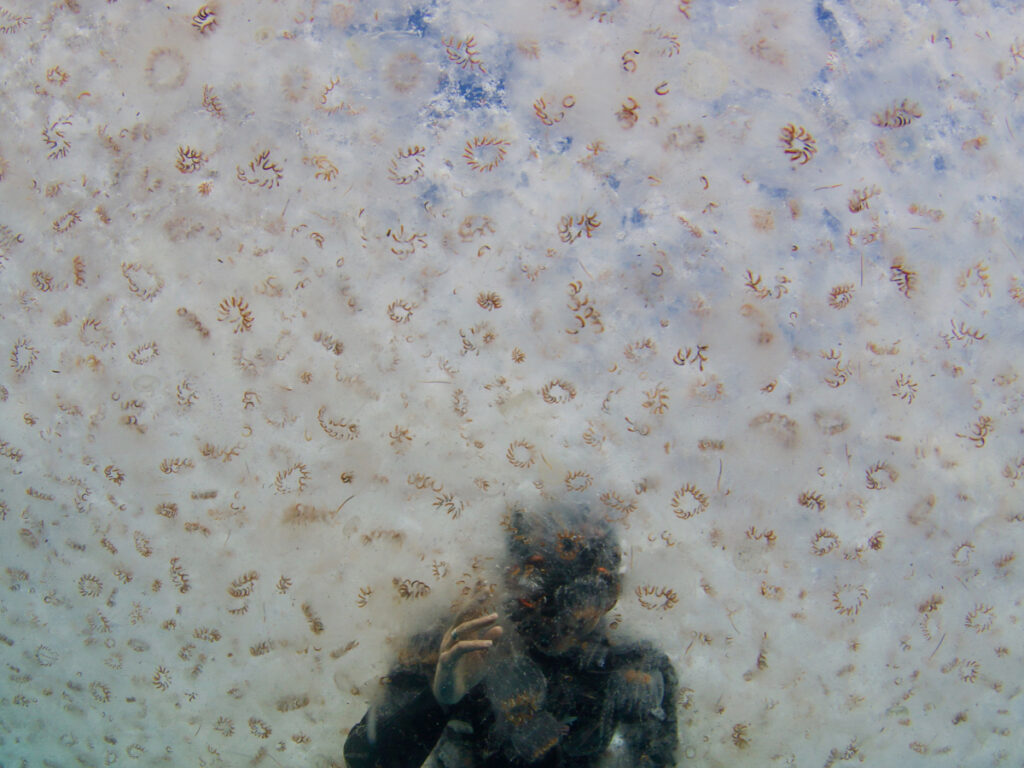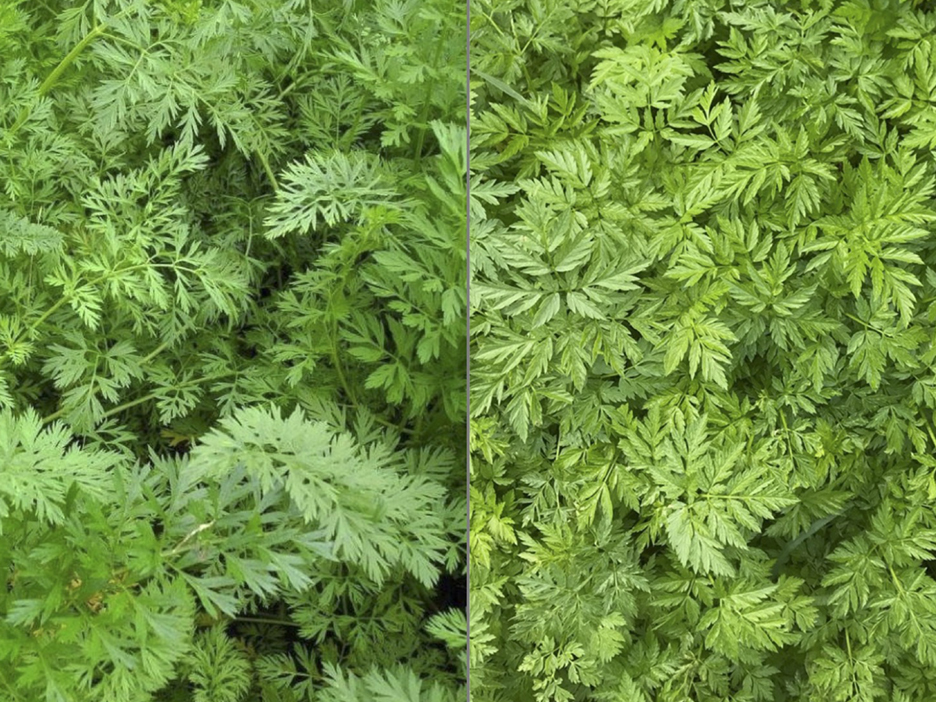Tidepooling shaped some of my favorite memories during the COVID-19 years: my daughter and I combed the coast, each month a new place, a new wonder.
Yesterday, I claimed one of the year’s last invitations to the shore. The morning king tide rolled back like a long-held breath, leaving behind its delicate revelations—small worlds cradled in rock hollows.
The star of this trip was Pisaster ochraceus, the purple or ochre sea star, though it appears in other colors too. The whispers of their presence passed between visitors on the rocks, but I didn’t see one until almost an hour into my slow search. The first one was smaller than my palm, lying upside down in the water, its stiff arms reaching nowhere. I turned it over carefully, its texture rough, its limbs still. For a moment, I wondered if it was alive.
Soon I found more, nestled quietly under a rock ledge, holding their rocky stillness. A few puddles away, a scene opposite of stillness—a spiny lobster struggled, all its legs flailing frantically, protesting madly against the momentary intruding hand—A father was holding it in air, showing to his children, their voices rising in excitement.
Pisaster ochraceus is considered the original keystone species—a critical indicator of the health of the intertidal zone. Voracious predators, they can pry open tight shut shells of mussels and consume the inside efficiently by turning it into “mussel soup!” The sheer abundance of ochre sea stars and horsemussels, which cover nearly every inch of surface at Dike Rocks, suggests a thriving ecosystem here in La Jolla—A success story made possible by establishing Marine Protection Area (MPA) nearly a century ago.
Learn more about Ochre Sea Stars from Hakai Wild.








水里的星星, 天上的星星
新冠疫情期间,潮汐池给我留下了一些最美好的回忆:和女儿漫游海岸,每个月探索一个新地方、一个新发现。昨日再访潮池。清晨的王潮像久久屏住的呼吸一样退去后,海泳分享她的秘密, 展示岩石空洞中孕育着的小世界。
这次探秘的明星是赭色海星,它们静静地依偎在岩石壁架下,保持着岩石般的静态。十几米外,与静相反, 一只龙虾奋力抗争抓它的大手: 一位父亲给他的孩子们展示他的发现。
赭色海星是潮间带健康状况的关键指标。它们的主食是贻贝, 有能力把贻贝变成“贻贝汤”!堤岩几乎每一寸表面都被贝类覆盖, 显示La Jolla 的潮汐生态系统欣欣向荣。这是将近一个世纪建立海洋保护区的成功事例。





